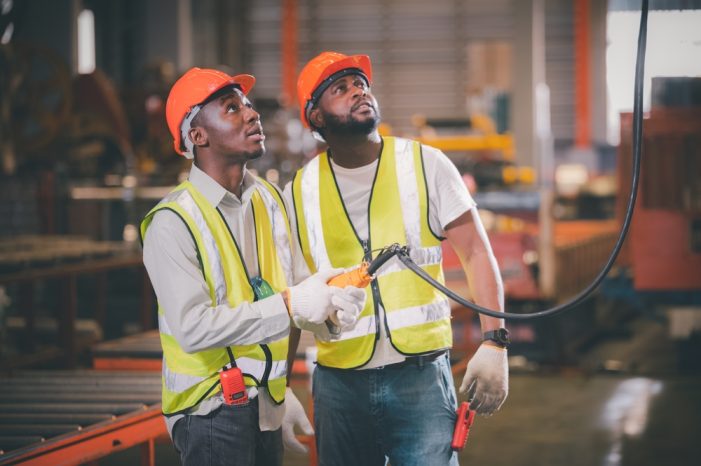By Fenix Suriel
New York, NY: As the freelance economy continues to expand and gig work reshapes traditional employment models, New York State is tightening its grip on how workers are classified.
From construction sites to tech startups and nail salons, the distinction carries high stakes for both workers and employers, influencing everything from tax obligations and healthcare benefits to legal protections and workplace rights.
At the heart of the classification debate lies one core question: Who controls the work?
In New York, the answer determines whether a worker is entitled to minimum wage, overtime pay, unemployment insurance, and legal protections or is instead considered an independent contractor, operating outside traditional employee safeguards.
Defining the Line: Control, Independence, and Risk
New York State relies on the common-law “right-to-control” test to determine a worker’s classification. If a company dictates when, where, and how tasks are performed, supplies the tools, evaluates performance, and controls work schedules, the individual is likely an employee. Independent contractors, by contrast, are autonomous; they set their schedules, use their equipment, and may work for multiple clients.
Industry Rules: Construction, Trucking, and Tech
New York law goes even further in industries prone to abuse.
Under the Construction Industry Fair Play Act, anyone working on a job site is presumed an employee unless the hiring party meets all three prongs of the “ABC test”: the worker must be free from control, perform work outside the usual business, and operate as an independent business.
A similar test applies to commercial drivers under the Transportation Industry Fair Play Act.
Meanwhile, in the growing tech and creative sectors, independent contracting thrives. Freelancers, graphic designers, software developers, and copywriters often work remotely, juggle multiple clients, and prefer the autonomy of contractor status. But that freedom can come at a cost.
Freelance Isn’t Free: A Landmark Law
To protect those outside the W-2 world, New York recently expanded its Freelance Isn’t Free Act (FIFA) statewide. Effective May 2024, the law requires written contracts for freelance jobs over $800 or lasting longer than 120 days. It guarantees timely payment within 30 days and protects freelancers from retaliation.
Advocates say FIFA fills a critical gap.
How New York Stands Apart
Unlike many states, New York explicitly extends anti-discrimination protections to independent contractors under its Human Rights Law. Workers cannot be harassed or retaliated against based on race, gender, or other protected categories, whether they’re full-time employees or gig workers.
This inclusive approach stands in contrast to states like Texas or Georgia, where contractors have fewer legal protections and little recourse if mistreated.
In California, however, the state has adopted its own stringent ABC test through Assembly Bill 5 (AB5), applying it broadly across industries. While New York uses the ABC test selectively, experts say it’s a trend to watch.
Employees vs. Contractors: When Companies Choose
For businesses, the decision to hire an employee or an independent contractor is strategic.
Employees are better suited for core roles that require supervision, consistency, and long-term investment. They offer loyalty, predictability, and a defined structure. Companies must pay payroll taxes, offer benefits, and comply with labor laws, but they gain more oversight.
Independent contractors, meanwhile, allow flexibility. They’re often brought in for specialized or temporary projects and don’t require benefits, workers’ comp, or unemployment insurance. However, misclassification can be costly.
Companies that misclassify employees as contractors may face back taxes, penalties, lawsuits, and even criminal charges under state and federal law.
The Human Side: Who Fills These Roles?
The divide between contractors and employees isn’t just legal—it’s deeply social.
In New York City, minorities dominate the labor force in both traditional and freelance roles. According to the Economic Policy Institute, about 78% of non-union construction workers in the city are people of color, compared to 55% of union members.
The personal services industry, including nail salons, domestic work, and cleaning, employs large numbers of immigrant women, particularly from Latinx and Asian communities. These workers are often misclassified as independent contractors and denied overtime, healthcare, or even minimum wage.
In contrast, the freelance creative and tech markets skew younger and more diverse, with workers opting for independence and flexibility—often by choice. Yet they, too, face delayed payments, lack of healthcare, and limited legal recourse without strong laws like FIFA.
Legal Landscape and the Road Ahead
New York continues to be a leader in protecting nontraditional workers. The Biden Administration’s recent U.S. Department of Labor rule—reviving the “economic realities” test aligns with New York’s multifactor analysis. Still, enforcement remains a challenge.
Fenix Suriel is a journalist based out of New York City and a student at the Craig Newmark Graduate School of Journalism.

